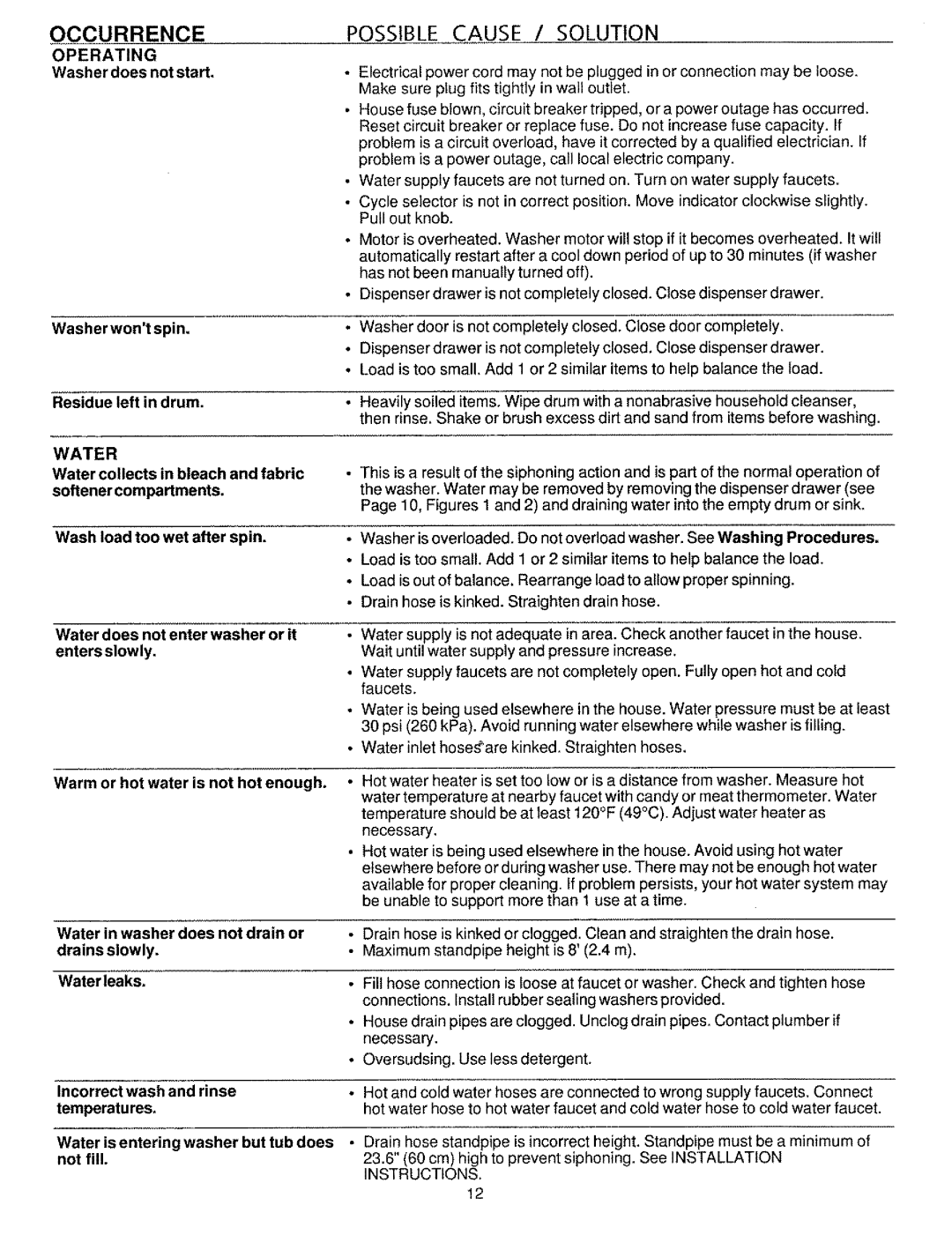134190400 (0209) specifications
The Kenmore 134190400 (0209) is a versatile and highly efficient appliance that stands out in the world of modern refrigeration. Designed with the consumer in mind, this appliance caters to various kitchen needs, ensuring food stays fresh and organized while enhancing the aesthetic appeal of any kitchen.One of the main features of the Kenmore 134190400 is its large capacity, providing ample storage space for groceries, beverages, and leftovers. This fridge comes equipped with adjustable shelves that allow users to customize the interior layout, making it easier to store bulky items or multiple small containers. The spill-proof shelves are designed to contain leaks and spills, simplifying the cleanup process.
The cooling technology integrated into the Kenmore 134190400 is impressive, utilizing a state-of-the-art cooling system that maintains uniform temperatures throughout the refrigerator. This allows for optimal food preservation, reducing the chances of spoilage or freezing. Additionally, the refrigerator features an energy-efficient design that not only helps in reducing energy bills but also contributes to a smaller environmental footprint.
Another noteworthy characteristic of this model is its advanced humidity-controlled crisper drawers. These drawers are designed to maintain the ideal humidity levels for fruits and vegetables, allowing them to stay fresher for longer periods. The crispers also include a separate compartment for delicate produce, ensuring that all items are stored under conditions that promote longevity.
The Kenmore 134190400 is equipped with a user-friendly LED display and intuitive controls, making it easy for anyone to adjust settings or monitor interior conditions. The appliance also features a door alarm that alerts users when the refrigerator door is left ajar, providing added peace of mind, especially in busy households.
Furthermore, this model includes an external water and ice dispenser, delivering convenience directly from the front of the appliance. It eliminates the need for constantly opening the door, which helps retain cold air and maintain optimal temperatures inside.
Overall, the Kenmore 134190400 (0209) is an excellent choice for anyone looking to upgrade their home refrigeration. Combining practical features, advanced technology, and efficient cooling, this refrigerator is designed to meet the demands of modern living while ensuring food safety and freshness.

